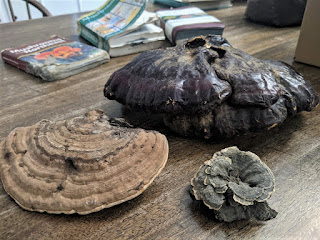
In early April, we had the pleasure of welcoming Andrew Fleszar from the Michigan Mushroom Hunters to the Library for a special presentation about foraging, cooking, and gardening wild mushrooms! We learned about basic mycology, mushroom ID, mushroom hunting ethics and safety, and more during this entertaining and informative program.
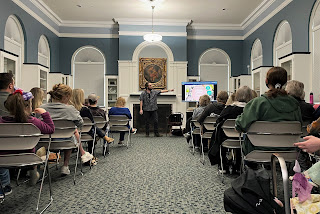
Andrew started by sharing some of his own experiences with mushroom hunting. Andrew is a State Certified Mushroom Identification Expert in the state of Michigan, who has professionally educated hundreds of students in the last six years and has eaten over forty species of wild mushrooms (without ever getting sick)!
Before diving into mushroom foraging, cooking, and growing, it's important to understand some basic information about mushrooms. Firstly, mushrooms are not plants! They are multicellular eukaryotes that are classified as fungi, which is genetically closer to humans than to plants. The mushroom life cycle is somewhat similar to a plant life cycle, but instead of seeds, mushrooms spread via spores. After the spores germinate, they form an underground body called mycelium, and then begin to form into primordium. After this, the "fruit" of the mushroom begins to grow from the ground-- this is the stem and cap of the mushroom that we can see! The part of the mushroom that we see aboveground is comparable to an apple growing from an apple tree-- it is simply the fruit, not the main body of the organism.
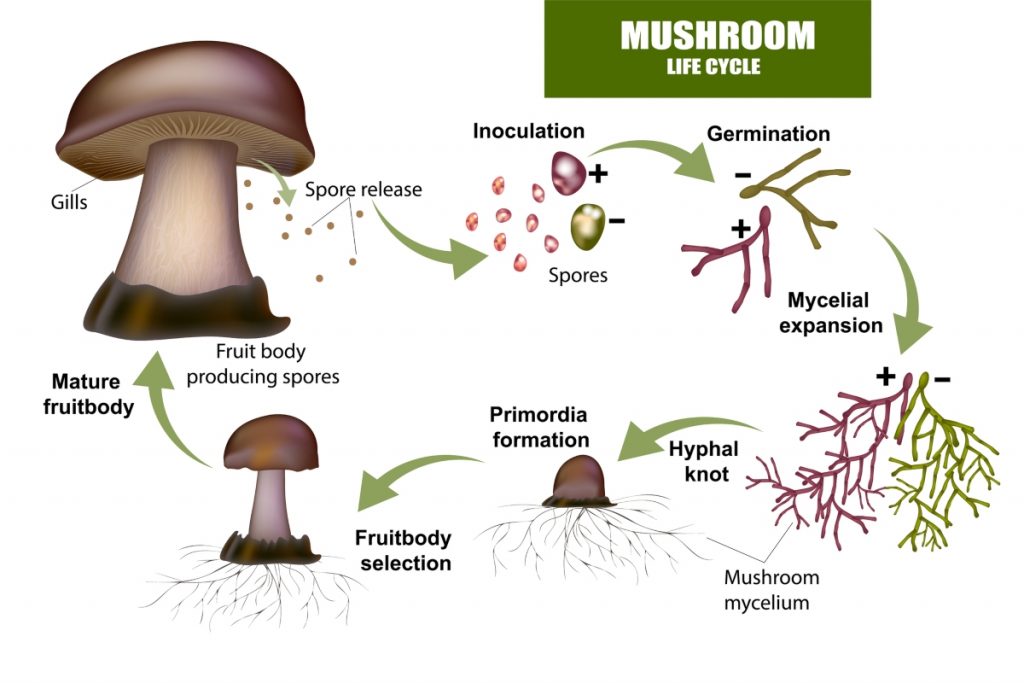
There are three basic types of fungi: Saprotrophic fungi are decomposing mushrooms, which means that they obtain food from dead and decaying materials. Some saprotrophic fungi are even being used to break down plastics! Parasitic fungi feed on a living organism, such as the creepy cordyceps fungus, which grows within ants and takes control of its behavior before killing it. Mycorrhizal fungi, on the other hand, share a mutualistically beneficial relationship with another organism, like morel mushrooms.
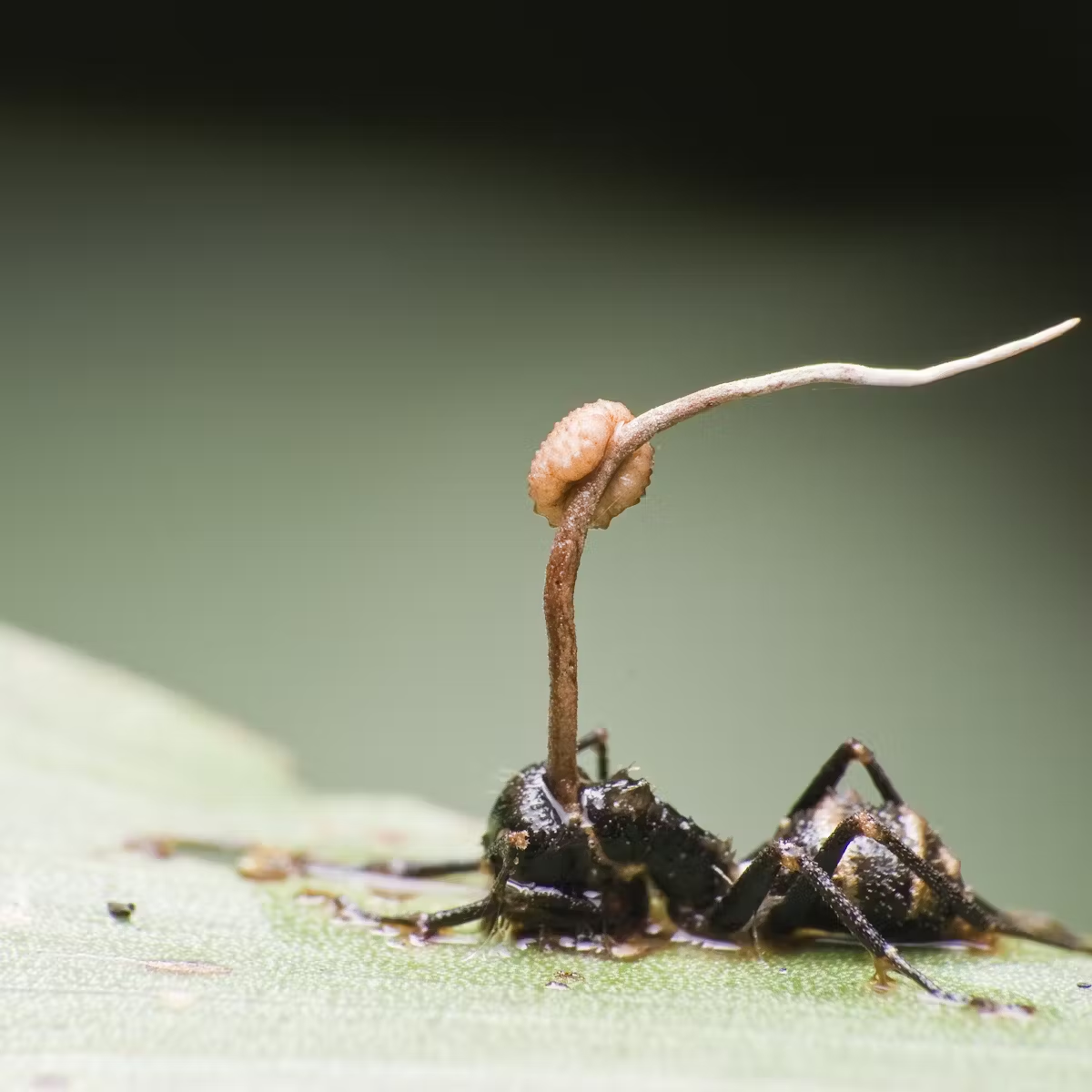
There are also ways to categorize mushrooms that are specific to their edibility by humans. These include:
- Edible- safe to eat, with good taste and texture
- Gourmet- not only safe to eat, but known to have an especially desired taste or texture. The much-desired morel mushroom is an example of this
- Medicinal- mushrooms that may improve health significantly, such as turkey tail mushrooms and Chaga mushrooms
- Ceremonial/ritualistic- these mushrooms often have psychoactive or psychedelic uses, such as the famous red fly agaric mushrooms
- Inedible- mushrooms that are too small, not flavorful, or for some other reason are not desired for eating, but are not toxic
- Poisonous- dangerous or deadly to consume. It is just as important to know your poisonous mushrooms as it is to know your edible ones! Some examples include Jack O Lantern mushrooms, panther caps, and funeral bell mushrooms
If you are interested in foraging for wild mushrooms, there are many environments where you can get started! Try foraging in local woodlands, parks, and even urban settings or your own backyard. When identifying mushrooms, it is recommended to learn with a mushroom guide to make sure your identifications are one hundred percent accurate. Mushroom hunters can also use spore prints to positively identify a mushroom. Spore prints are like a fingerprint for a mushroom. To take a spore print, the stem of the mushroom is removed to expose its gills underneath. The cap of the mushroom is placed, gills down, on a piece of paper and a cup is placed overtop. After leaving the mushroom for a few hours or overnight, the design and color of the spore print left on the paper can provide a positive mushroom ID!

Another way to ensure a positive ID of a mushroom is to document the characteristics of the mushroom, with as much detail as possible. Also, it is important to ALWAYS reference more than one source of information on your mushroom to make sure that your ID is one hundred percent correct.
When mushroom hunting, we can never be too careful-- remember to harvest safely and ethically. Do not eat a mushroom unless you are certain of its identity, and be sure to respect the land you are foraging on!
Eating mushrooms, whether foraged or purchased from a local farmer or gardener, can offer many benefits. Some mushrooms may be cancer-fighting, like turkey tail mushrooms, or provide valuable nutrients like vitamin B, and fiber. Some mushrooms even produce their own melanin, which can be a great source of vitamin D! There may also be potential for mushrooms to help delay neurodegeneration and keep the mind sharp, according to recent studies. Many mushrooms can be enjoyed in your favorite recipes-- or just sauté them with some butter and garlic!
If you are interested in tasting some amazing home-grown mushrooms, then mushroom gardening may be for you! Delicious gourmet mushroom varieties such as wine caps, lions mane, oysters, shitake, and even corn smut can be grown in your garden or home. Mushrooms can be grown in bags, in tubs with humidifiers, or with specially made mushroom growing kits. North Spore Cultivation Products offers a variety of mushroom-growing kits, should you be interested in giving it a try. Mushrooms can be grown outdoors, too-- plug logs, totems (slabs of wood), and even buckets work for growing your own edible fungi. Mushrooms can even be cultivated in your garden bed along with your veggies and flowers!
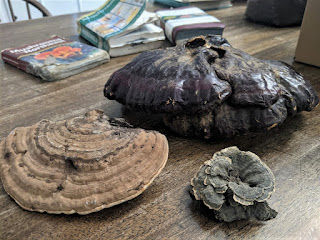
There's so much fascinating information in the world of fungi, and we are so grateful to Andrew for visiting the library and teaching us a few things to get us started! You can learn more about mushrooms by exploring The Mushroom Hunter's Field Guide or the adorable book Mushroom Rain. Or, learn about the impact that mushrooms may have on our health with the 2021 film Mushrooms: A Superfood for Well-Being, available on Kanopy with your Cromaine Library card.
Learn more about Andrew and his work with the Michigan Mushroom Hunters by viewing his Prezi presentation, or visit the Michigan Mushroom Hunters Facebook page. And be sure to keep an eye on the Cromaine online calendar for upcoming events this spring to feed the naturalist in you!